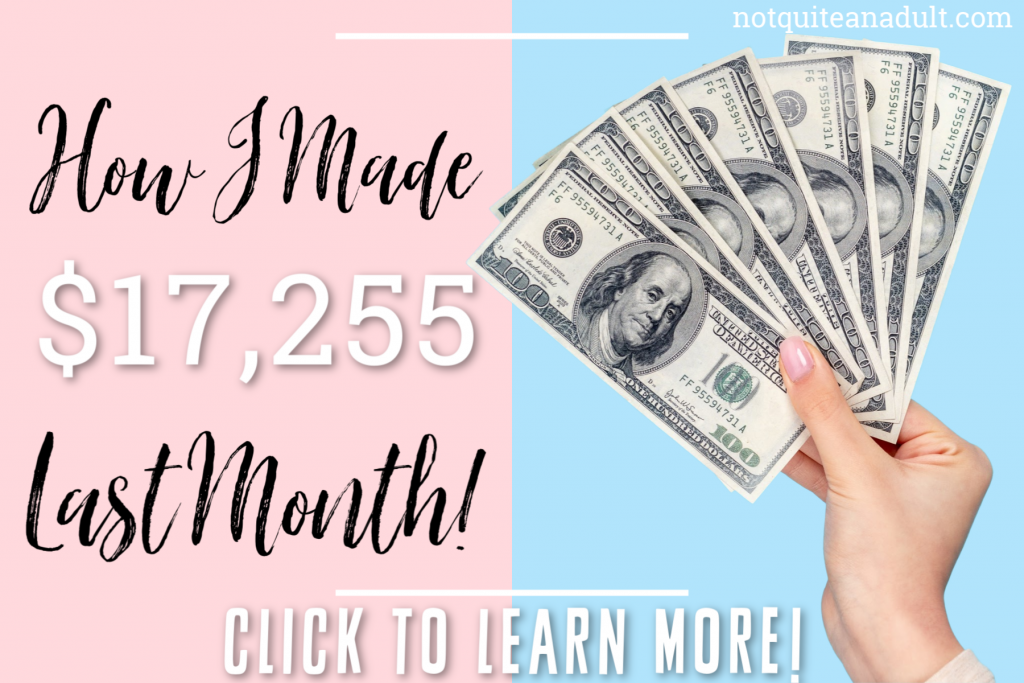Traditional budgeting methods often don’t work for people who are living paycheque to paycheque and this is where the half payment budget method comes in handy. On Not Quite an Adult, we’ve discussed numerous ways to handle your budget and each option works for different people.
No two budgets are created equal so I always suggest you try out them all. The half payment budget method is a great option if you have tried most traditional budgeting methods but just can’t seem to make things work.
For many people, bigger bills have a really… FUN habit of taking up a ton of a single paycheque and leaving little to no money left for other expenses until you get paid again. This method does a really awesome job of spreading your expenses out throughout your paycheques instead of having everything happen at once!

Table of Contents
What is the Half Payment Budget Method?
In its most basic forms, the half payment budget method is where you take a monthly reoccurring payment (i.e., a $250 car payment) and split it in half so you can stop running out of money at the end of a pay period.
So, in this example, you have a $250 car payment, this means that you’d set aside (or pay) $125 for each pay period.
Depending on the type of payment you have two options. The first is that you can keep the half-payment from the first pay period and keep it in a separate account until it’s time to make the payment. This is best if the company you’re paying doesn’t accept half payments and you have to wait until you have all of the money.
The second option is if the company does accept half payments, it’s often beneficial for you to pay twice so you don’t have any temptation to spend the money before you have the rest.
WHY THE HALF PAYMENT BUDGET METHOD WORKS
Most bills come at or around the first of the month and people are usually inclined to pay the entire thing as soon as its due. If all of your bills happen around the same time of the month you can end up spending your entire paycheck on bills and not have any money left over for groceries or gas until you get paid again.
This method helps you plan for your expenses in a way that makes them seem smaller and less daunting.
This system works no matter how often you’re paid, for example, if you’re paid weekly, you can do a quarter payment budget method and save a bit of money from each pay period to cover your bills.
Another reason why the half payment budget is awesome is because when you don’t split your money in a way that works like this, you may end up with more money available at the end of a pay period and spend it on things that aren’t actually important.
With the half payment budget method you could put that extra money towards next month’s bills and possibly get AHEAD on bills! What a life that would be.
How to Use the Half Payment Budget Method
I’ve always found that the best way to teach something is to use concrete examples that are easy to see and understand. So, let’s say your monthly income and FIXED, recurring expenses are as follows:
- Income $3,000
- Rent $1,200 due on the 1st
- Car Payment $250 due on the 15th
- Car Insurance $120 due on the 5th
- Day Care $500 due on the 20th
- Student Loans $300 due on the 30th
*it’s more difficult to use this method with payments that are going to vary (i.e., utilities) so it’s best to focus it on things that you know are going to stay the same.
When you’re budgeting in a traditional way, your bill payment may look something like this:
Paycheck #1 – $1,500
- Rent – $1,200
- Car Insurance $120
$180 left over for groceries, utilities, and other expenses for that two week period.
Paycheck #2 – $1,500
- Car Payment $250
- Child Care $500
- Student Loans $300
450 left over for groceries, utilities, and other expenses for the next two weeks.
As you can see, budgeting in this way makes it so you have a different amount of money left over at the end of each pay period. Could you live off only $180 for two weeks, factoring in other variable bills? Probably not.
Also, the $450 left over after the second pay day usually ends up being spent in ways that are going to move you forward since it feels like you’re flush with cash and have so much to spend.
Now let’s see the same figures, but using the half payment budgeting method:
Paycheck #1 – $1,500
- Rent $600
- Car Insurance $60
- Car Payment $125
- Child Care $250
- Student Loans $150
$315 left over to spend on groceries, utilities, etc.
Paycheck #2 – $1,500
- Rent $600
- Car Insurance $60
- Car Payment $125
- Child Care $250
- Student Loans $150
$315 left over to spend on groceries, utilities, etc!
WHERE TO START WITH THE HALF PAYMENT BUDGET METHOD
As I do with most things personal finance, I don’t suggest that you just go out and right now start cutting all of your bills in half and implement this fully this month.
It is going to take you a few months to get all of it in order and be able to make it a regular thing for your finances.
I suggest that you just start with a smaller monthly recurring fixed payment, like car insurance, and work up to doing all of your payments this way. Wait until you get the hang of it and start feeling more comfortable before adding another half payment because you don’t want to be overwhelmed and end up missing a payment entirely.
Final Thoughts
If you’ve never been able to find a budgeting method that works for you and you’re still living paycheck to paycheck, this simple budgeting method could be the answer to your hopes and dreams! Try using the half payment budgeting method for a year and see how much progress you can make on your financial goals!




Leave a Reply